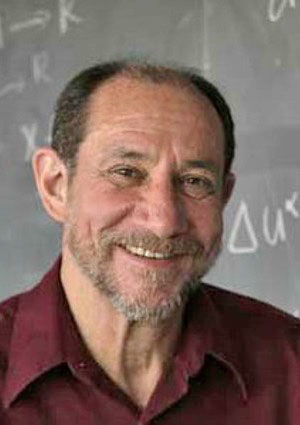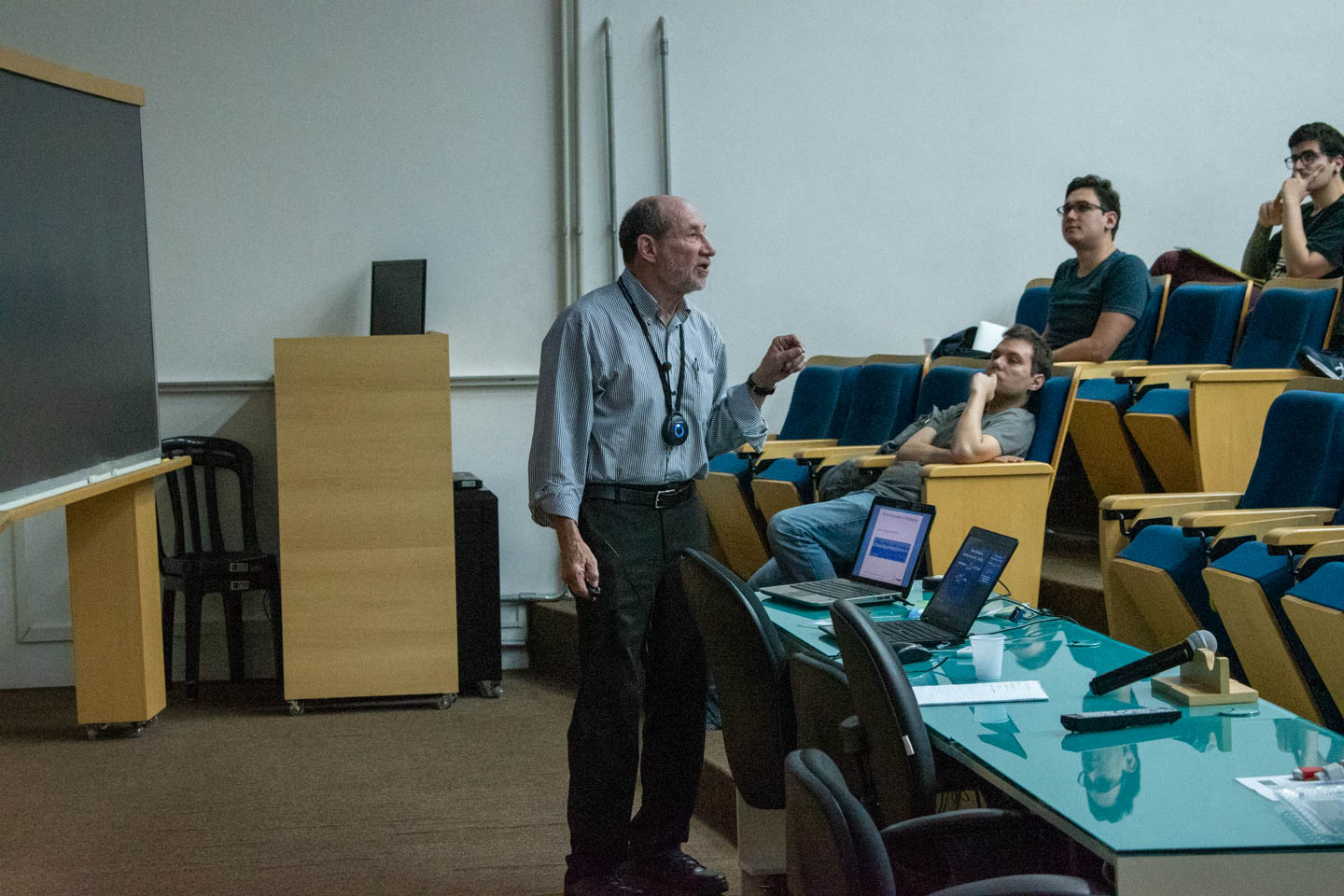Archive for December, 2019
Ever wondered what it is like to study some of the Universe’s most dramatic events?
Raised in a ‘post-Sputnik era’ within a general atmosphere of awareness of the importance of science, professor John Friedmann became interested in science (and physics) during high school. In college, he realised there were several unexplained mysteries about the Universe, powered by the advances and discoveries of satellites, that pointed towards general relativity (GR). Despite the skepticism of some astronomers to GR, and keen to understand more, he got into the small group of physicists studying the new field of relativistic astrophysics in the late 60’s – to live what turned out to be the ‘golden age of black holes and neutron stars’.

John Friedman holds the position of University Distinguished Professor Emeritus at the University of Wisconsin-Milwaukee (USA).
Nowadays, John Friedman holds the position of University Distinguished Professor Emeritus at the University of Wisconsin-Milwaukee (USA). Fellow of the American Physical Society, he has worked on a broad range of problems in gravitational physics and relativistic astrophysics, involving neutron stars, black holes, gravitational waves, topology of spacetime, and topological questions in quantum gravity. The professor attended the ‘One-day Relativity Workshop’ at ICTP-SAIFR in November and took some time after the event to talk to us.
You were supervised by Prof. Chandrasekhar during your PhD. Later, he was awarded a Nobel Prize for his work on structure and evolution of stars. I’m very curious… What was it like to work with a Nobel laureate?
Well, he had a lot of insight into what the right problems were to look at. He came to General Relativity with a background in astrophysics – he was one of the country’s leading astrophysicists. He recognized the importance of looking at stability of black holes; eventually he did the first calculations of black hole normal mode frequencies. His real strength was his ability to see the structure in the equations that govern the physics he was looking at. He was a throwback to classical physics of fifty years earlier but he assimilated many of the modern techniques. He was unusual, in his day, for manipulating long equations rather than relying on short calculations and physical insight.
What is General Relativity and how did it change Physics in the last century?
General relativity is Einstein’s law of gravity that tells you that gravity is equivalent to a curvature of spacetime and that particles travel paths of the shortest length in spacetime. People draw pictures where you see space curved like a rubber sheet with a ball placed on it – that conveys some of the feeling for it. But the importance of the theory, in astronomy, is not really this geometric meaning of spacetime, it’s what it [the theory] predicts for what you see in the Universe. Its predictions of black holes, the description of how the Universe expands, of the nature of the densest stars – neutron stars – and the description of the most energetic events in the Universe – the collision and coalescence of black holes and the coalescence of neutron stars and neutron stars and black holes. It [the theory] is needed to predict and understand the most exciting events that are occurring in the Universe.
You study some of these events, like neutron stars! What are they and why are they important? You were talking about coalescence of neutron stars… What happens when two neutron stars fuse together?
At the end of the life of a massive star – let’s say between 8 and 20 times the mass of the Sun – the core of the star is [made of] the stablest element – iron. You don’t form anything heavier than iron [inside the star] and, as the star burns its nuclear fuel outside the core, you just keep adding ashes to the dead iron core and its mass keeps growing. The star is sustained by the pressure of the core’s electrons, [where] the electrons have to move faster and faster, to keep the core apart – to counteract its gravity.
As [the core] is growing larger, its gravity is increasing and the electrons have to move faster. But there’s an upper limit on how fast they [the electrons] can move – that’s the speed of light!!. Once the core gets above 1.5x the mass of the sun, the electrons would have to go faster than light. So at, or shortly before, that upper limit the electrons are all pushed down onto their nuclei and they turn into neutrons – an electron + a proton = a neutron – and the entire star collapses down to a giant nucleus.
It’s a gigantic nucleus – the Universe largest atomic nucleus: [there are] 1 with 57 zeros neutrons inside of it! Nuclear density is about 1 billion tons per teaspoon – in natural units. The inside of that star is even denser than nuclear density – it’s the densest matter of the Universe, with an average density of 3 billion tons per teaspoon – and it provides a way of trying to understand how matter behaves at the highests densities in the Universe.
That’s part of its importance for physics, and neutron stars also have the Universe’s largest magnetic fields and they serve as the end of evolution for a whole class of stars. The galaxy is dotted with thousands of neutron stars. [Finally,] the coalescence of neutron stars or neutron stars and black holes gives you the most energetic, most luminous, electromagnetically observed events in the Universe.
“We are all made of stardust” as Carl Sagan would say. What does that mean and how does that relate to your work?
That’s the statement that basically everything in you, every element, every atom – except for hydrogen and helium – was forged, in one way or another, by stars. Every element, including hydrogen and helium in you, was once inside a star. In that sense, you literally are stardust. Some heavier elements in you – lithium, carbon, nitrogen, oxygen – those elements are all forged in stars and distributed through the Universe. [That happens] either the stars blow off their masses (when they’re heavy) or in supernova explosions. But the heaviest elements – rare earth elements, gold, silver, platinum, lead, uranium – these elements, it looks now like – from work of the last 10 years and the most recent discovery of two neutron stars colliding with each other – [they] were formed in the collisions of neutron stars, or perhaps between neutron star and black hole. Finding out the way in which they form, the way that which these collisions occur, and doing the observations and understanding those, it is in part related to the work I’m doing.
Everybody tells us about nucleosynthesis and how the elements are formed… but they only tell us up until iron. And we see a lot of other elements out there! And I always wondered ‘what about all the other stuff… how do they form?’. But it is a great question people are still trying to figure out, right?
Yeah, right! It looks like we’ve got the answer, but still… you can’t say it’s really decided by one event. It looks increasingly likely that we know the answer, at least for the major part of where they formed, but I’m sure in 10 years there will be others! Nucleosynthesis [the process by which atomic nuclei are formed] has not turned out to be a simple field, there are always exceptions, there are always different mechanisms – there’s cosmic rays hitting, spallation by cosmic rays, there’s just a bunch of mechanisms! It’s like saying “how do you form CO2?”. Well, there’s not gonna be one place in the Universe where you form carbon dioxide! I’m sure smaller amounts will [be known to] be formed in various different ways…
And that’s the nice thing about science: it’s about always asking new questions and keep doing it!

The professor gave a lecture during the “One-day Relativity Workshop”, which happened at ICTP-SAIFR in November.
Quantum mechanics and general relativity don’t really work out together. But people have been working a lot, trying to find this ‘theory of everything’, or at least trying to find a quantum description of gravity. Are physicists any closer to sorting this out? Where are they looking for clues to solve this problem?
The holy grail! Hmm… if I knew [where to look] I’d be working on it! Hahaha
So there’s been a huge effort in a number of different approaches to quantum gravity and, although I have my own biases, nothing that people have tried has had what I would call a “remarkable success”. The most popular is string theory, which had early predictions of supersymmetric particles that have not been seen. Its attempts to make predictions about ordinary physics, ordinary particles have been unsuccessful, but there was a kind of remarkable coincidence in modelling a particular class of black holes – not physical black holes, but higher dimension black holes: something called extreme black holes. But that success was many years ago and, to my mind, you can’t see a similar dramatic success coming out of that.
From the other approaches, I think some are exciting but again, it’s been something of a desert.
Theoretical physics had tremendous advances in the 60’s and 70’s with the development of gauge series, the Standard Model and the final experimental piece falling in place with the discovery of the Higgs particle. There are significant increases in our understanding of neutrinos, partly theoretical, partly experimental. But nothing like those dramatic advances [for unifying QM and GR] in theoretical physics. The dramatic advances have really been in cosmology and relativistic astrophysics, not in particle physics, in recent years.
You were here for the workshop on general relativity. Could you tell a little bit about your experience here and the importance of this kind of event for physics and physicists?
It’s always exciting to come to these things, in particular for me. I’ve been working much more in astrophysics than in quantum areas in recent years, so it gave me a chance to see and talk to people doing work on quantum field theory in curved spacetime, with implications for Hawking evaporation and the question of what happens to information in the evaporation of black holes. These are interesting questions, and it was good to see things that have been done in the last few years, that I hadn’t been aware of. That’s really useful to me.
My being here also… People here were largely working on areas like that [using quantum approaches] so I gave an overview, made the essential calculations in the field of gravitational wave astronomy accessible. I hope that’s useful for people watching, to [get to] know what has been done in the last few years.
If you are interested on neutron stars, check out these videos on Youtube!
Neutron Stars – The Most Extreme Things that are not Black Holes
Continue Reading | Comments Off on Ever wondered what it is like to study some of the Universe’s most dramatic events?